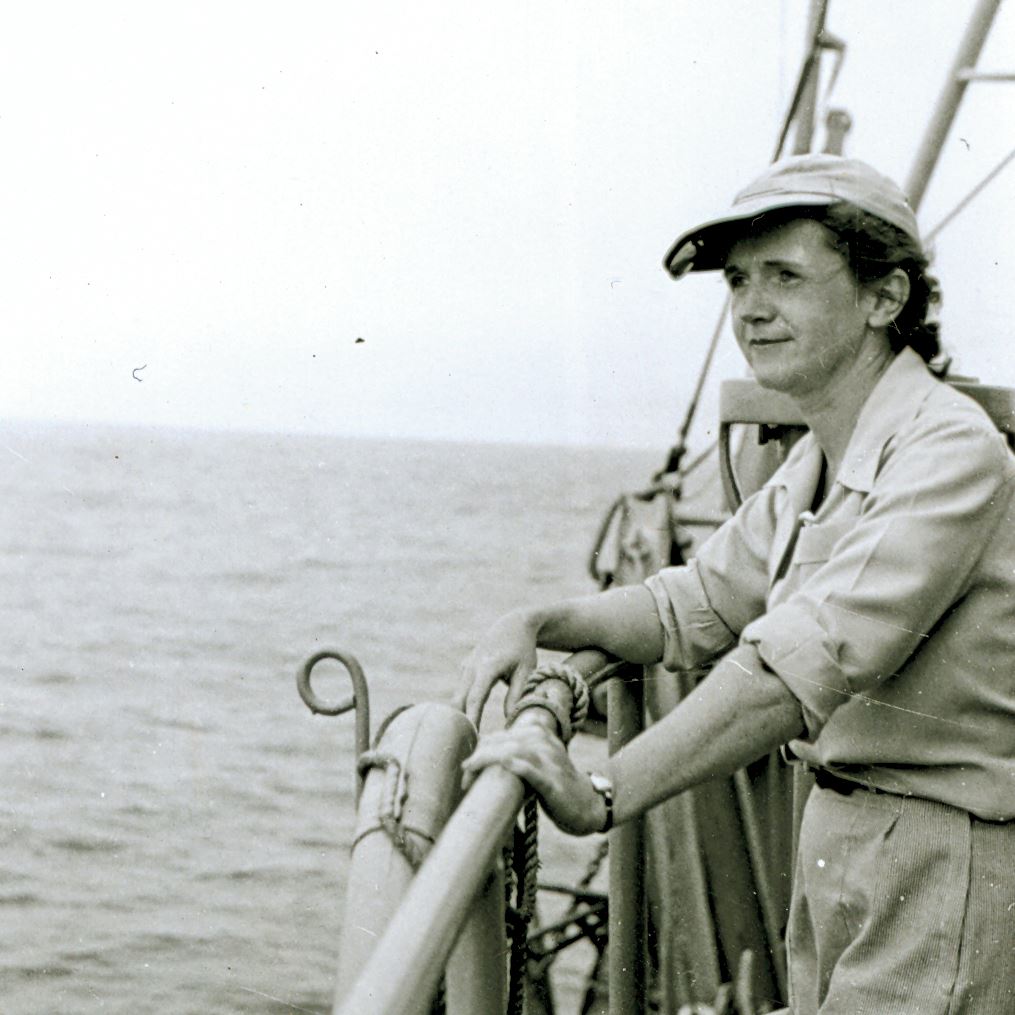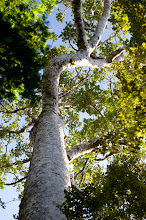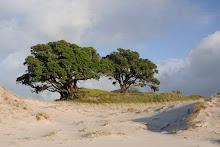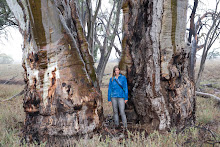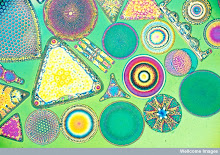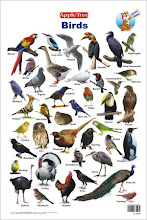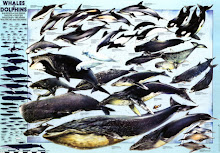Euphausia superba
"Krill is said to be the largest biomass on the planet,
outweighing the human population of the world."
EMPEROR PENGUINS
WEDDELL SEALS
MYSTICETI, or BALEEN WHALES
ANTARCTIC FOOD CHAIN
NORWEGIAN KRILL POACHERS
THORSHOVDI renamed ANTARCTIC SEA
'ECO-HARVESTING' TECHNOLOGIES
PILLS FOR 'HEALTH'-OBSESSED CONSUMERS
PET FOOD MADE FROM ZOOPLANKTON
VITAL NUTRIENTS FOR PENGUINS, SEALS & WHALES
MARINE ECO-SYSTEMS
AQUATIC FOOD-CHAIN NETWORK
STARVING SEAL PUP
"I AM SO HUNGRY...WILL YOU PLEASE FIND ME SOME FOOD?"
"[A] growing number of scientists [are] concerned about the effects of a kind of gold rush, as fishing companies race to the Southern Ocean to catch krill..."
"Krill is said to be the largest biomass on the planet,
outweighing the human population of the world."
EMPEROR PENGUINS
WEDDELL SEALS
MYSTICETI, or BALEEN WHALES
ANTARCTIC FOOD CHAIN
NORWEGIAN KRILL POACHERS
THORSHOVDI renamed ANTARCTIC SEA
'ECO-HARVESTING' TECHNOLOGIES
PILLS FOR 'HEALTH'-OBSESSED CONSUMERS
PET FOOD MADE FROM ZOOPLANKTON
VITAL NUTRIENTS FOR PENGUINS, SEALS & WHALES
MARINE ECO-SYSTEMS
AQUATIC FOOD-CHAIN NETWORK
STARVING SEAL PUP
"I AM SO HUNGRY...WILL YOU PLEASE FIND ME SOME FOOD?"
"[A] growing number of scientists [are] concerned about the effects of a kind of gold rush, as fishing companies race to the Southern Ocean to catch krill..."
"Fishing
companies won’t stop pillaging the Antarctic unless we show them that there’s
no longer demand for these products."
'TEAM TRACKS A FOOD SUPPLY AT THE END OF THE WORLD'
http://www.nytimes.com/2012/03/13/science/tracking-antarctic-krill-as-more-is-harvested-for-omega-3-pills.html?_r=0
New krill-harvesting technology introduced by Aker BioMarine of Norway, the largest krill fishing company in the South Atlantic, has made it economically feasible to send vessels to the punishingly icy waters at the bottom of the world. These factory ships continuously vacuum up krill (Aker calls it “eco-harvesting”) and process it immediately on the ship. Last year Aker, which started harvesting krill in 2006, bought a second factory ship.
'TEAM TRACKS A FOOD SUPPLY AT THE END OF THE WORLD'
http://www.nytimes.com/2012/03/13/science/tracking-antarctic-krill-as-more-is-harvested-for-omega-3-pills.html?_r=0
"One
recent morning at the bottom of the world, Kim Bernard spotted two
humpback whales gorging in the Southern Ocean not far offshore. Dr.
Bernard, a biological oceanographer, was spending the austral summer at
Palmer Station...her team, known at Palmer as 'The Psycho Krillers,' are studying the feeding patterns of Antarctic
krill, the small, bug-eyed shrimp-like crustaceans that are the central
diet for whales, penguins, seals and seabirds.
She is one of a growing
number of scientists concerned about the effects of a kind of gold rush,
as fishing companies race to the Southern Ocean to catch krill and turn
it into animal feed and lucrative omega-3 dietary supplements.
The
former Soviet Union began fishing krill in the ocean in the 1960s, but
it was not until the 1990s that Luc Rainville, a graduate student at the
University of Victoria in British Columbia, discovered that the omega-3
fatty acids in Antarctic krill were readily absorbed by the human body.
New krill-harvesting technology introduced by Aker BioMarine of Norway, the largest krill fishing company in the South Atlantic, has made it economically feasible to send vessels to the punishingly icy waters at the bottom of the world. These factory ships continuously vacuum up krill (Aker calls it “eco-harvesting”) and process it immediately on the ship. Last year Aker, which started harvesting krill in 2006, bought a second factory ship.
Many
major retailers, including CVS, Costco and Walmart, sell krill oil
capsules along with other omega-3 supplements. Most come from krill oil
processed by Aker BioMarine and its main rival, Neptune.
Whole
Foods Market pulled krill oil from its shelves in May 2010, citing a
decline in predatory sea animals — whales, penguins and seals — in areas
where krill are fished.
But
Aker has gained two important allies. Its krill oil was approved by the
Marine Stewardship Council, a global program that issues labels
certifying seafood products as sustainable, despite objections from some
scientists and environmental organizations. And Aker has joined forces
with WWF-Norway, an arm of the international environmental organization
WWF, paying it an undisclosed amount to help Aker make its fishing
practices more sustainable. Aker also provides data on krill populations
to WWF-Norway and scientists studying krill and its predators."
CVS
is supporting the plunder of Antarctica and one of the last unspoiled oceans on
the planet.
The
pharmacy giant is marketing and selling Antarctic krill oil as a health
supplement -- vacuuming krill in vast quantities from the Antarctic oceans and
pumping them into pills. It’s putting the entire Antarctic ecosystem at risk,
and we can stop it.
Krill
are tiny crustaceans (they look a lot like miniature shrimp), but they
represent a giant link in the Antarctic food chain. A new SumOfUs report shows
that krill numbers are crashing, endangering the survival of hundreds of marine
creatures like whales, penguins and seals.
The
only way these companies will stop is if there’s no market for Antarctic
wildlife on our shelves. That’s why we’re targeting CVS -- if we can get this
major retailer to refuse to sell krill-killing supplements, we can stop fishing
companies from destroying the Antarctic.
CVS
stocks krill-based products by MegaRed and other companies, as well as selling
its own, home brand krill oil. CVS claims that their krill products are
sustainable, but the claim doesn't stand up to scrutiny. In fact, only some of
its krill products are certified. And leading environment groups including
Greenpeace and Pew Environment Group have long objected to the certification of
krill fishing. One of the more well-known certifications is by Marine
Stewardship Council (MSC). Pew has said: "The MSC's label falsely
advertises the message that all krill are sustainably caught and that consuming
krill-based omega 3 supplements or purchasing farmed salmon raised on krill
meal is okay. Nothing could be further from the truth."
The
krill population is vital, but it’s depleting fast. Research shows krill
populations have already dropped by 80 percent since the 1970s. What’s also
shocking is that Antarctic penguin populations, which depend on krill for food,
have collapsed by 50 percent in the last 30 years.
Krill
are on the front lines of climate change -- melting sea ice is destroying their
habitat, and ocean acidification could further harm them. And at the same time,
krill also play a key role in slowing global warming, as they transport carbon
dioxide from the surface to the deep water.
Yet
krill fishing is a lucrative industry -- seafood companies use mammoth vessels
equipped with new technology that literally vacuum the pristine Antarctic
ocean, sucking up krill in massive volumes. It’s one of the last fish stocks
that hasn’t been plundered to near extinction -- but it might not stay that way
for long.
But
it doesn’t have to be like this -- we can eat and protect our health without it
being so costly to the Earth. Omega-3 health supplements can be produced from
plant-based inputs or from fisheries that are sustainably harvested.
Fishing
companies won’t stop pillaging the Antarctic unless we show them that there’s
no longer demand for these products. Putting pressure on well-known retailers
is the best way we can stop the depletion of the krill population. By
disrupting demand and getting rid of this market, we can make retailers put the
environment over profits.
VACUUMING
ANTARCTICA: THE CORPORATIONS
PLUNDERING THE EARTH'S LAST FRONTIER
EXECUTIVE
SUMMARY
Around
the world, growing demand for farmed fi sh andomega-3 health supplements is
coming at a hidden cost – the Antarctic, and one of the last unspoiled oceans
on the planet. In a quest to exploit the “pink gold” of Antarctica’s krill as a
raw input into both fish farming and omega-3 supplements, this pristine
environment and its whales, penguins, seals and birds are dangerously
threatened.
But
it doesn’t need to be this way – and it’s time for the companies threatening
the Antarctic to hear this message. After depleting many of the world’s oceans
of their fish, companies are now going after what’s left at the bottom of the
food chain – the krill, a tiny crustacean that is the heart of the Antarctic
ecosystem and feed its , seals and
whales. Using giant industrial factory-ships, seafood companies are literally
vacuuming the oceans by sucking up the krill that other marine creatures depend
on.
Antarctic
ice is melting due to climate change, depleting krill’s ice algae food source.
The end result is that since the1970s, the krill population has already dropped
by %. 80%. In turn, research now
shows that Antarctic penguin populations, which depend on krill, have collapsed
by 50% in studied colonies over the last 30 years
With
climate change accelerating, pressure will relentlessly increase on this
delicate wildlife ecosystem. Plundering krill in an already-threatened
ecosystem is reckless in the extreme.
This
exploitation is ultimately dependent on a market for krill-based products.
Currently, this route to market is provided by a number of major retailers,
including Walmart, Target, CVS, and Walgreen’s. These companies continue to
sell krill products despite clear contradictions with their own sustainability
commitments. Our message to these companies is simple:
Stop
supporting the dangerous exploitation of Antarctic krill. Take the krill off
your shelves, and leave it for the penguins and the Antarctic ecosystem.
PROTECTING
KRILL PROTECTS THE ANTARCTIC WILDERNESS
The
waters surrounding Antarctica are still relatively un- touched by human
activity. These waters are home to almost 10,000 species, many not found
anywhere else on the planet.
Krill
are at the heart of this pristine ecosystem. This tiny crustacean plays a
crucial role in the ocean food chain, feeding the whales, penguins, seals and
birds living in or visiting the waters of Antarctica. Krill is the foundation
of this marine wilderness, providing over 96% of the caloric needs of sea-birds
and marine mammals
But
this foundation is now threatened by both climate change and krill fishing,
putting this vibrant and magnificent natural world at serious risk. In the
1970s, there were huge quantities of krill in the Antarctica. But with krill
heavily dependent on ice algae to survive, shrinking sea ice and warm- ing
waters have reduced krill swarms to a fraction of their former size. Scientists
calculate that krill populations have dropped 80% since the 1970s
Krill
fishing and ocean acidification induced by climate change now threaten what is
left. Krill are also a vital and under-appreciated contributor to the global
ecosystem, helping to hold global warming in check, as their vast schools
transport carbon dioxide from the surface waters to the deep. Declining krill
numbers will therefore accelerate the climate change that is already warming
the waters surrounding the Antarctic Peninsula faster than anywhere else on
Earth
Unfortunately
for krill, and the species dependent on it, this tiny crustacean is highly
valuable for corporations that want it both as a food source for fish farms and
for its omega-3 fatty acids. Massive growth is forecast for aquaculture, and the human nutrition krill market is
growing more than 40% per year.
Because
other fish species have been exhausted, big business is now using
industrial-scale trawling of krill at the bottom of the food chain to satisfy
their need for this raw material. To feed this demand, seafood companies have
invested in gigantic vessels equipped with new technology that literally vacuum
the ocean for krill, sucking up massive volumes at unpredicted rates. China’s
clear intention to boost its krill harvest has raised concerns about the
rapidly expanding catches, which are ”outstripping our ability to orderly
manage it”, as an advisor to the Australian government described the situation.
Recently,
China and Russia vetoed a proposal to establish Marine Protected Areas where no
fishing would be allowed.
The
threat has been recognized and some leaders are acting. In 2010, California
banned fishing for krill in state waters. The law was a precautionary action
designed to protect the valuable commercial species which feed on krill before
it was too late.
The
same year the supermarket chain Whole Foods Market showed courageous leadership
by withdrawing krill products from its shelves, citing a decline in predatory
sea animals – whales, penguins and seals – in its decision
Right
now, the magnificent oceans surrounding the Antarctic remain relatively
untouched by human activity. But urgent action by consumers is needed to keep
it that way.
THE
CORPORATIONS AND COUNTRIES PLUNDERING ANTARCTICA'S KRILL
In
February of each year, the fleet of krill fishing ships set off for Antarctica
for their 6 month season. These so called “ships” are more like floating
industrial factories, many exceeding 120 meters in length and with the ability
to vacuum the ocean for krill and then process it onboard. The krill fleet’s
capacity to harvest the “pink gold” of Antarctica’s krill is exploding, with
the total hold capacity of licensed ships rising 44% in just the last two years
Companies
from Norway, China, South Korea, Japan and Chile dominate krill fishing.
Fishing in Antarctic waters is regulated by CCAMLR, The Commission for the
Conservation of Antarctic Marine Living Resources. The key krill-fishing
countries are all among the 25 members of CCAMLR, but due to a consensus-based
decision process, a single country can veto any decision proposed within
CCAMLR.
A
number of member countries have been attempting to establish Marine Protected
Areas in the Southern Ocean for every year, but decisions have consistently
been vetoed by members with significant fishing operations. In 2012, after the
proposal had been vetoed, Greenpeace announced that “This year, CCAMLR has
behaved like a fisheries organization instead of an organization dedicated to
conservation of Antarctic waters”
In
2014, Russia and China vetoed the fourth attempt to protect the Antarctic
waters from fishery. Today, most krill is used as aquaculture fish feed, but
the new omega-3 market is growing rapidly and krill is becoming increasingly
popular as a raw material for these dietary supplements. Ironically, the
remoteness and wildness of krill is used as a sales pitch in marketing these
supplements, with marketers telling consumers that it comes from “the purest
water on Earth”
As
well as pure, krill is sometimes marketed as “abundant” and the fishing as “sustainable”.
With retailers that consumers trust continuing to stock these products, and a
lack of quality information readily accessible, most consumers are unaware of
the effects that these products have on penguins and other Antarctic species.
Unfortunately,
scientists and regulators currently lack access to quality information on how
much krill currently exists in Antarctic waters. The last survey of krill
populations was conducted fourteen years ago, and estimates differ by hundreds
of millions of tons
This
makes certifications obtained by some krill fisheries very questionable, a fact
that
has been pointed out by scientists and NGOs, with Greenpeace strongly advising
against any certification of krill fisheries.
Aker
Biomarine, a Norwegian fishery and biotech company, is the biggest supplier of
krill oil. This year the company is building a new production plant and has
recently started a campaign aimed at medical practitioners that promotes the
health benefits of krill.
Aker
Biomarine has its own krill brands, but krill from Aker’s vessels also supply
other large brands, such as MegaRed, owned by Reckitt Benckiser, and Barlean’s
Wild; Whole Krill Oil. Other brands, like Nature’s Bounty, owned by NBTY,
do not reveal the supplier of the krill oil used in their products.
But
the bottom line is this: All key suppliers of krill oil source their raw
materials from the same place, the pure and increasingly-threatened ocean
ecosystem surrounding Antarctica. With krill numbers collapsing, exploitation
of this crucial part of the Antarctic ecosystem needs to end.
http://www.fis.com/fis/worldnews/worldnews.asp?monthyear=&day=9&id=73772&l=e&special=0&ndb=0
A rigorous, third party assessment has shown that the Aker BioMarine’s Antarctic krill (Euphausia superba) fishery continues to meet the demanding Marine Stewardship Council's (MSC) standards for environmentally sustainable fishing. As a result, Aker BioMarine’s krill products, including krill oil, may continue carrying the MSC eco-label, identifying their origin from a sustainable source.
In order to determine the sustainability of the fishery, a team of independent scientists and auditors considered all available science and reviewed the fishery’s management practices against the MSC Fisheries Standard. Their analysis confirms that Aker BioMarine is protecting the unique environment, habitats and species living in the Southern Ocean.
Aker BioMarine's Antarctic krill fishery recertified as sustainable
http://www.fis.com/fis/worldnews/worldnews.asp?monthyear=&day=9&id=73772&l=e&special=0&ndb=0
A rigorous, third party assessment has shown that the Aker BioMarine’s Antarctic krill (Euphausia superba) fishery continues to meet the demanding Marine Stewardship Council's (MSC) standards for environmentally sustainable fishing. As a result, Aker BioMarine’s krill products, including krill oil, may continue carrying the MSC eco-label, identifying their origin from a sustainable source.
In order to determine the sustainability of the fishery, a team of independent scientists and auditors considered all available science and reviewed the fishery’s management practices against the MSC Fisheries Standard. Their analysis confirms that Aker BioMarine is protecting the unique environment, habitats and species living in the Southern Ocean.
Norway: Aker BioMarine Acquires Krill-specialized Vessel Thorshøvdi
'COMMITTED TO KRILL
FISHERY'
"Antarctic Sea will
be outfitted with Aker BioMarine’s
proprietary technology patents pending Eco Harvesting
technology. This allows krill to be sustainably harvested with
no by-catch of marine mammals, seabirds or unwanted fish.
proprietary technology patents pending Eco Harvesting
technology. This allows krill to be sustainably harvested with
no by-catch of marine mammals, seabirds or unwanted fish.
'This new acquisition
demonstrates that we are in the krill fishery
for the long term,' says Aker BioMarine. 'Like all other vessels that
we have in the krill fishery, besides using the most advanced,
eco-friendly fishing system available, Antarctic Sea will have an
independent observer on board to verify our no by-catch policy.' "
for the long term,' says Aker BioMarine. 'Like all other vessels that
we have in the krill fishery, besides using the most advanced,
eco-friendly fishing system available, Antarctic Sea will have an
independent observer on board to verify our no by-catch policy.' "
"Consumers enjoy
shrimp fed on QRILL™ AQUA diets."
"Shrimp are chemosensory
feeders. QRILL™ AQUA Meal
attractants increase feed intake, even in critical periods."
attractants increase feed intake, even in critical periods."
'KRILL FISHERIES, THE NEXT
COLLAPSE?'
"Many people think of
Krill as microscopic creatures, but in fact,
each individual can grow to 5 cm in length and live up to 7 years.
They form the zooplankton. In an ocean with relatively few fish,
they occupy the niche that schooling fish fill in other oceans as
a keystone species. They feed on phytoplankton that blooms in
the nutrient-rich, deep-water upwellings at the Antarctic
Convergence during the 24-hour southern summer sunlight.
Krill is said to be the largest biomass on the planet, outweighing
the human population of the world.
each individual can grow to 5 cm in length and live up to 7 years.
They form the zooplankton. In an ocean with relatively few fish,
they occupy the niche that schooling fish fill in other oceans as
a keystone species. They feed on phytoplankton that blooms in
the nutrient-rich, deep-water upwellings at the Antarctic
Convergence during the 24-hour southern summer sunlight.
Krill is said to be the largest biomass on the planet, outweighing
the human population of the world.
On March 17, 2013 we found
the Krill fishing vessel Antarctic Sea,
as seen in the accompanying photos, fishing and processing,
bellowing huge white plumes into the pure Antarctic air,
in position63-44.7S 060-18.6W, where the Gilbert and
Orleans Straits meet east of Trinity Island. The 134-meter,
9432 gross tonnage ship, formerly named Thorshovdi and
still licensed under that name, is owned by the Norwegian
company Aker BioMarine.
as seen in the accompanying photos, fishing and processing,
bellowing huge white plumes into the pure Antarctic air,
in position63-44.7S 060-18.6W, where the Gilbert and
Orleans Straits meet east of Trinity Island. The 134-meter,
9432 gross tonnage ship, formerly named Thorshovdi and
still licensed under that name, is owned by the Norwegian
company Aker BioMarine.
Nearby, in position 63-43.2S
061-15.6W, the Kai Xin was
fishing. The 104-meter, 4407t pelagic trawler owned by
Shanghai Kaichuang Deep Sea Fisheries Co. Ltd. was fishing
for the same pink gold: Krill.
fishing. The 104-meter, 4407t pelagic trawler owned by
Shanghai Kaichuang Deep Sea Fisheries Co. Ltd. was fishing
for the same pink gold: Krill.
A little bit further, the
Republic of Korea vessel Adventure was
after the same thing. And they are not alone. There are two
Polish vessels, the Alina and Sirius, two other Norwegians, the
Juvel and the Saga Sea, two other Koreans, the Kwang Ja Ho
and the Insung Ho, two more Chinese, the Fu Rong Hai and the
Lian Xing Hai, and the Chilenean vessel Betanzos, all after
Euphausia superba.
after the same thing. And they are not alone. There are two
Polish vessels, the Alina and Sirius, two other Norwegians, the
Juvel and the Saga Sea, two other Koreans, the Kwang Ja Ho
and the Insung Ho, two more Chinese, the Fu Rong Hai and the
Lian Xing Hai, and the Chilenean vessel Betanzos, all after
Euphausia superba.
They are all licensed from
December 1 of 2012 to November 30
of 2013, for part or all of the regions 48.1-48.4, basically the
entire South Atlantic Ocean South of 50 degrees, excluding the
ice-clogged Weddell Sea.
of 2013, for part or all of the regions 48.1-48.4, basically the
entire South Atlantic Ocean South of 50 degrees, excluding the
ice-clogged Weddell Sea.
During the 1970s and early
80s, the first Krill fisheries were
dominated by the Soviet Union, Eastern Europe and Japan.
With the fall of communism, the catches declined from a
maximum of 500,000 tons to 100,000 tons a year, mainly
taken by Japan. In 2004, Japan dropped out, but Korea,
Norway and China stepped in and the catches rose again
to 210,000 tons in 2009/10, 178.000 tons were caught in
2010/11 and 157.000 tons in 2011/12. Norway took 101,000
tons of that last season’s total, the majority for Aker BioMarine.
dominated by the Soviet Union, Eastern Europe and Japan.
With the fall of communism, the catches declined from a
maximum of 500,000 tons to 100,000 tons a year, mainly
taken by Japan. In 2004, Japan dropped out, but Korea,
Norway and China stepped in and the catches rose again
to 210,000 tons in 2009/10, 178.000 tons were caught in
2010/11 and 157.000 tons in 2011/12. Norway took 101,000
tons of that last season’s total, the majority for Aker BioMarine.





























